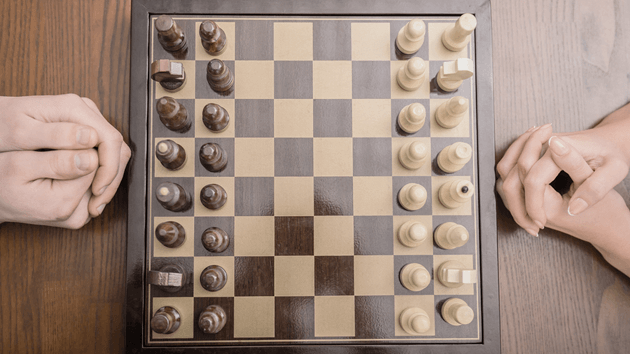Learning how to move the pieces around on a chessboard may sound exciting. But when it comes to competitive chess, you must not merely get familiar with every rule, but master those indispensable moves to ensure a win. A lack of deep knowledge and practice of these could land you in trouble even in a possible winning situation.
The Integral Rules of Chess Every Player Must be Well-versed in:
Rule 1: Pawn Promotion
Let's start with pawn promotion. This rule comes into play when your pawn is in the 8th rank. When you reach that, you can promote your pawn. That would mean, you can replace it with your choice of queen, knight, rook, bishop (of the same color). Even if your queen has already been captured, you can still promote your pawn to queen, and hence the name.
Important: The piece you choose to replace mustn't be another king or pawn, though it can be an already captured queen. When you promote a pawn to queen, it's queening. But for other pieces, it's underpromotion.
Rule 2: Insufficient Material Draw
According to this rule, if the game can not be finished in checkmate, it'll be declared a draw. It mostly happens when both the opponents are narrowed down to one king each. In this case, there's no way a checkmate could happen even after absurd blunders. So, the game will eventually be declared a draw.
There are other scenarios where the game will draw; for example, if there aren't any pawns on board and both sides have any of the below pieces:
A king and a knight
A lone king
A king and a bishop
Rule 3: En Passant
Now, this one is a significant and complex rule in chess. Let's say you exercise your power to move your pawn two places initially. And when you do so, your pawn stands in the block adjacent to the opponent's pawn.
Now, if you weren't allowed to move two places as per the old rules, your opponent would have the chance to capture your pawn. To give your opponent this chance to capture your pawn En Passant came into existence. As per this rule, even if the pawn stands adjacent to your opponent’s pawn after you move two blocks, your opponent can capture your pawn.
However, the opponent must make this move immediately. If he misses the opportunity, he won't be able to use this rule in the game.
Rule 4: Three-Fold Repetition
This rule is fairly easy to explain. However, unless you're making a note of your opponent's moves, you won't benefit from this rule. According to this, if one position occurs 3 times, the player can claim a draw.
Now, the reason behind this is there's no real progress happening in the game. And this could lead to an endless game, hypothetically
Important: The draw as per this rule never occurs automatically. You or your opponent needs to claim a draw to the arbiter to enjoy its benefits.
Rule 5: Fifty-move Rule
The 50-move rule is a unique occurrence in both online and board games. The rule comes to play when both conditions are met:
If there hasn't been any capture in the last 50 moves.
And a pawn (or any piece) has not been moved within that duration.
The reason behind this rule is simple. It stops the player with poor chances of winning from continuing the game forever or trying to win by tiring the opponent.
Rule 6: The seventy-five-move Rule
You can think of this as the extension of the previous rule. A relatively new rule (adopted in 2016), this rule comes into play when for any set of 75 moves, there hasn't been a pawn movement or any other capture. Consequently, the game is declared a draw. However, in this case, neither you nor your opponent claims the draw. Instead, the arbiter, on your or your opponent's behalf, claims the draw.
Rule 7: Touch-move Rule
The touch-move rule is only valid for offline over-the-board games and not for online versions. As per this rule, if you intentionally touch a piece, you either need to move it, if allowed, or capture that same piece, if allowed.
Let's say you touched your own piece. In this case, you'll have to move your piece if the move is legal. And if you touch another player's or opponent's piece, you need to capture that piece if it's legally possible.
Bonus- Rule 8: Stalemate & Draw
This one's a bonus as you read this far. Let's say it's your turn to move. Your king is not under check, but there isn't any legal move for you either. This is known as a stalemate situation. In this situation, the game ends in a draw.
The stalemate comes to the rescue during the endgames. A weaker player can use this condition to draw a match which he would otherwise lose.
Moving it Right
Many new and even experienced chess players undermine or overlook the value of good old chess rules. As a result, they lose the game at times in the most unpredicted ways or, the opponent who knows the rules claims a draw. Hence it is vital for any aspiring player to inject these crucial rules into their brains to get a hold oF their games.
At MindMentorz we train young players to leverage their potential through systematic and cognitive-skill-oriented coaching. We believe in developing a passion for chess in kids that surpasses the idea of just winning. We train them through the paths of master players, learning their winning strategies as well as developing individualistic tactics that set them apart in their games. To know more call us at +919606847428 or visit our website: https://www.mindmentorz.com/.


